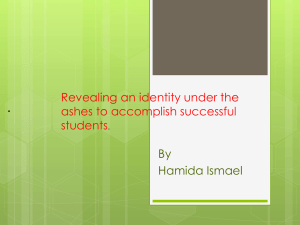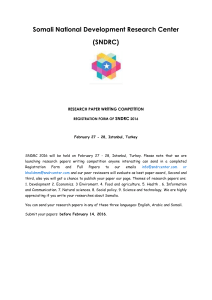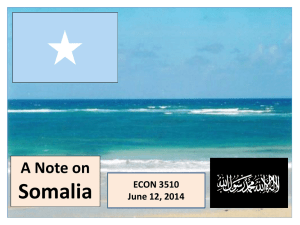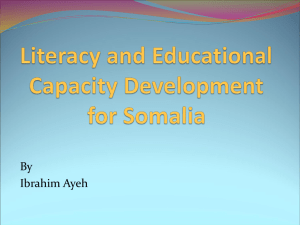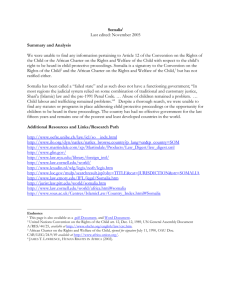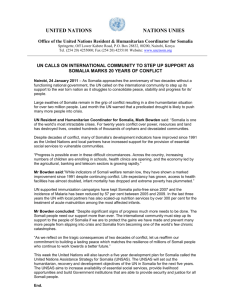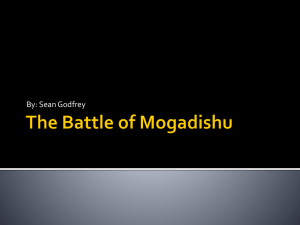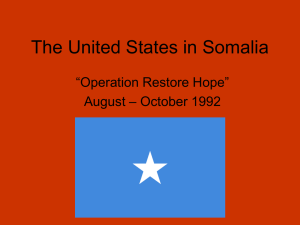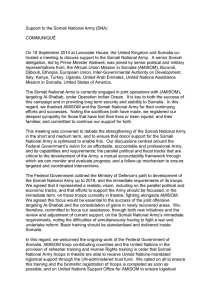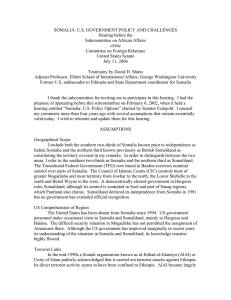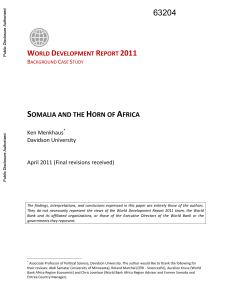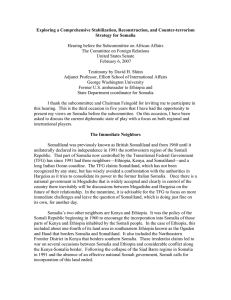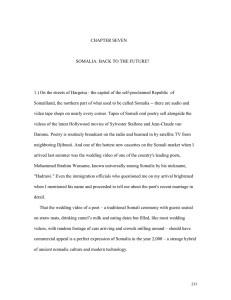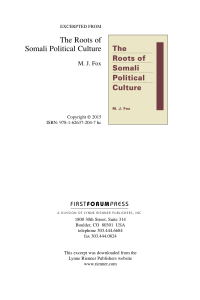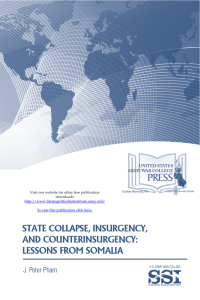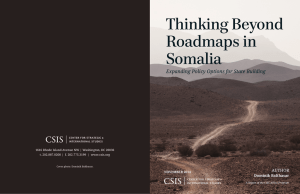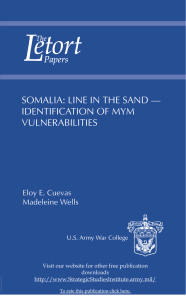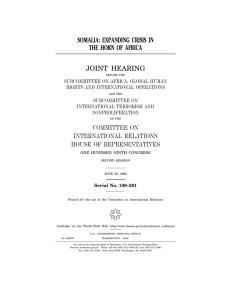Pastoralism PPT
advertisement
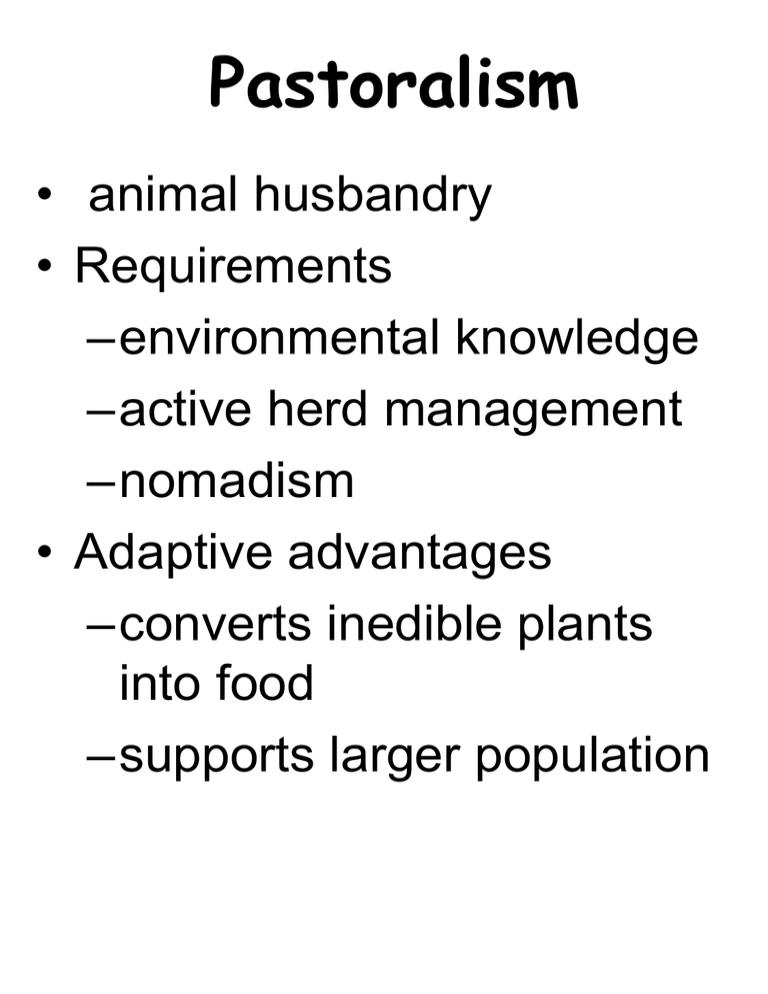
Pastoralism • animal husbandry • Requirements –environmental knowledge –active herd management –nomadism • Adaptive advantages –converts inedible plants into food –supports larger population .E. E. Evans-Pritchard (1940: 90)1 • Some outstanding traits in Nuer character may be said to be consistent with their low technology and scanty food supply. I emphasize again the crudity and discomfort of their lives. All who have lived with Nuer would, I believe, agree that though they are very poor in goods they are very proud in spirit. Schooled in hardship and hunger-for both they express contempt—they accept the direst calamities with resignation and endure them with courage. Content with few goods they despise all that lies outside them; their derisive pride amazes a stranger. Somalia Somalia: profile • Population: 9.3 million (UN, 2010) • Capital: Mogadishu • Major languages: Somali, Arabic, Italian, English • Major religion: Islam • Life expectancy: 50 years (men), 53 years (women) • Main exports: Livestock, bananas, hides, fish • GNI per capita: n/a • Internet domain: .so Time line Emerged as Arab settlement in 10th century and bought by Italy in 1905 • Capital of independent Somalia from 1960 • 600s - Arab tribes establish the sultanate of Adel on the Gulf of Aden coast. • 1500s-Sultanate of Adel breaks into small states. • 1875 - Egypt occupies towns on Somali coast and parts of the interior. • 1860s - France acquires foothold on the Somali coast, later to become Djibouti. Timeline • 1887 - Britain proclaims protectorate over Somaliland. • 1888 - Anglo-French agreement defines boundary between Somali possessions of the two countries. • 1889 - Italy sets up a protectorate in central Somalia, later consolidated with territory in the south ceded by the sultan of Zanzibar. Timeline • 1925 - Territory east of the Jubba river detached from Kenya to become the westernmost part of the Italian protectorate. • 1936 - Italian Somaliland combined with Somalispeaking parts of Ethiopia to form a province of Italian East Africa. • 1940 - Italians occupy British Somaliland. • 1941 - British occupy Italian Somalia. Somalia: Independence • 1950 - Italian Somaliland becomes a UN trust territory under Italian control. • 1956 - Italian Somaliland renamed Somalia and granted internal autonomy. • 1960 - British and Italian parts of Somalia become independent, merge and form the United Republic of Somalia; Aden Abdullah Osman Daar elected president. Pastoralism 2 • Cultural significance –Symbiotic relations –Social uses –Food sources –Other uses • Herding work • Animal complementarity • Ecological issues • Sources of conflict Pastoralism 3 • Social organization –Flexibility: dispersal, mutual aid – autonomous villages –overlapping kin networks • Kinship: blood and marriage –Patrilineages –Principles of fission/fusion –Affects inheritance, authority, nurturing, social obligations, and personal/social identity Pastoralism • Household: women and children associated with a single adult male; Homestead: group of related men + families) • Each household has large variety of stock, with minimal # of each (in traditional subsistence regime) being 25-30 cattle, 10 camels, 100 small stock (goats & sheep), & 10-12 donkeys pastoralism • Each species has to be handled in certain way: e.g., cattle can be watered every other day, small stock need water every day, camels every 3 days • Hence, in dry season, must have several herds & herding parties -- very labor intensive system Family • Nuclear families cannot be economically independent -simply do not provide enough labor, hence • E. African pastoralists generally organize labor via patrilineal extended family (with polygyny) • Daughters married out at young age (patrilocal/virilocal residence) Men and Women relation • but sons stay with father's homestead until they are 3040 years old, when 1) father dies and son inherits cattle allocated to his mother at time of her marriage, or 2) father grants son an "advance" on his inheritance, letting him marry and set up his own homestead Man-woman relation • (This last option only happens if father is very successful, has lots of wives & cattle, and therefore can afford to let oldest sons "bud off" and leave father's labor force as well as reduce his herds) Somali Kinship • Founding father Samaale, connects to Prophet • Six clan-families or “tribes” (30 gen.) • Clans = subunits (20 gen.) • Primary lineages (6-10 gen.) –Exogamous (marry out) • Diya group –4-8 generations –Pay and receive “blood money” • Matrifocality Somali society • relatively homogenous linguistically (Somali) and religiously (Islam). • Lineage based on clan and sub clan lines. • the main clan families of • Darod, Dir, Issaq, Hawiye and Rahanweyn, along with minority clans, constituted Somali society. • Minorities (Bantu,Barawans, and Bajuni), represent Somalia.
